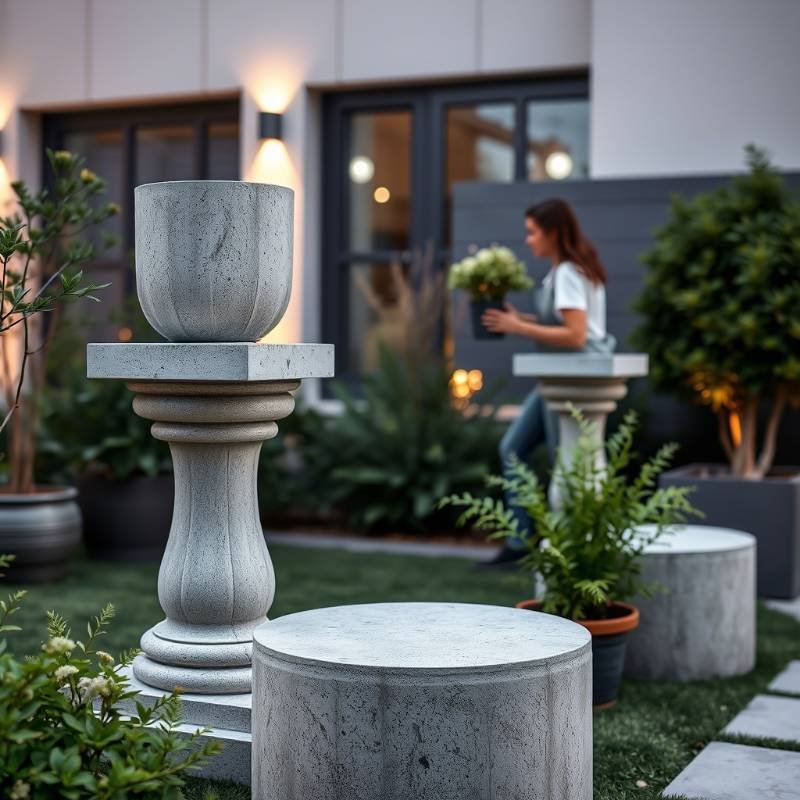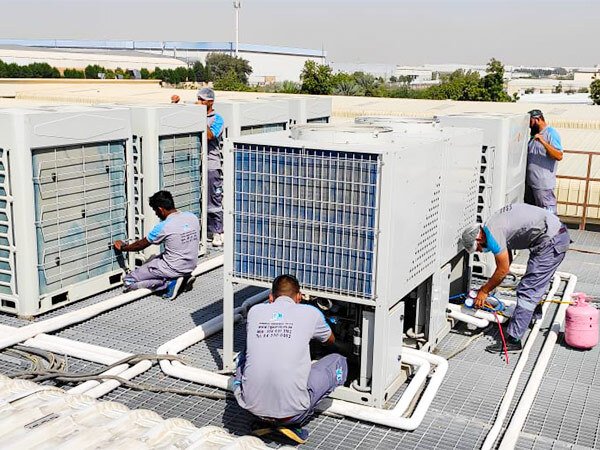Balustrades pedestals are an essential part of railing systems, providing both structural support and aesthetic appeal. Whether used in staircases, balconies, or terraces, pedestals play a crucial role in securing balusters and ensuring the stability of the entire balustrade. This guide covers everything you need to know about balustrades pedestals, including their types, materials, installation, and maintenance.
What Are Balustrades Pedestals?
Balustrades pedestals are the base components that hold balusters (vertical posts) in place within a railing system. They act as connectors between the balusters and the handrail or base rail, ensuring the structure remains sturdy and secure. Pedestals come in various shapes and sizes, depending on the design and material of the balustrade.
Pedestals are commonly used in both indoor and outdoor settings, from grand staircases in homes to public walkways and commercial buildings. Their primary function is to distribute the weight of the balustrade evenly, preventing wobbling or collapse. Without pedestals, balusters would lack proper support, making the railing unsafe.
Types of Balustrades Pedestals
There are several types of balustrades pedestals, each designed for specific applications and materials. The most common types include:
1. Metal Pedestals
Metal pedestals are widely used due to their strength and durability. They are often made from stainless steel, aluminum, or wrought iron, making them suitable for both modern and traditional designs. Metal pedestals are resistant to rust and corrosion, especially when treated with protective coatings, making them ideal for outdoor use.
2. Glass Pedestals
Glass pedestals are used in frameless glass balustrades, providing a sleek and modern look. These pedestals are typically made from high-strength tempered glass and secured with metal clamps or standoffs. Glass pedestals allow for unobstructed views, making them popular in contemporary architecture.
3. Stone Pedestals
Stone pedestals are commonly found in classical and high-end architectural designs. Made from materials like marble, granite, or limestone, they add elegance and grandeur to staircases and balconies. Stone pedestals are heavy and require strong structural support, but they offer unmatched durability and a timeless appearance.
4. Wooden Pedestals
Wooden pedestals are used in traditional and rustic balustrades. They are often carved or turned to match the design of wooden balusters and handrails. While wood offers a warm and natural look, it requires regular maintenance to prevent rot, warping, or insect damage.
Materials Used in Balustrades Pedestals
The material of a pedestal affects its durability, appearance, and maintenance requirements. Here are the most common materials used:
Stainless Steel
Stainless steel is a popular choice for pedestals due to its resistance to rust and corrosion. It is strong, long-lasting, and works well in both indoor and outdoor settings. Stainless steel pedestals are often used in modern and industrial-style balustrades.
Aluminum
Aluminum is lightweight yet strong, making it an excellent option for pedestals. It is also rust-resistant and requires minimal maintenance. Aluminum pedestals are commonly powder-coated in various colors to match different design schemes.
Wrought Iron
Wrought iron pedestals are known for their classic and ornate designs. They are highly durable but require regular painting or sealing to prevent rust. Wrought iron is often used in traditional and vintage-style railings.
Tempered Glass
Tempered glass pedestals are used in frameless glass balustrades. The glass is heat-treated for strength and safety, reducing the risk of shattering. These pedestals provide a minimalist and open look, perfect for modern homes and commercial spaces.
Natural Stone
Natural stone pedestals, such as marble or granite, offer a luxurious and high-end appearance. They are extremely durable but can be expensive and require professional installation due to their weight.
How to Install Balustrades Pedestals
Proper installation of balustrades pedestals is crucial for safety and stability. The installation process varies depending on the material and design of the pedestal. Below is a general guide:
Step 1: Measure and Mark Positions
Before installation, measure the spacing between each pedestal to ensure even distribution. Mark the positions where the pedestals will be placed on the base rail or floor.
Step 2: Secure the Base
For metal or wooden pedestals, drill holes into the marked positions and use screws or bolts to secure them. For glass pedestals, use specialized clamps or standoffs to hold them in place.
Step 3: Attach Balusters
Once the pedestals are fixed, insert the balusters into the pedestals. Ensure they are straight and properly aligned before securing them with adhesives, screws, or welding, depending on the material.
Step 4: Install Handrails
After all balusters are in place, attach the handrail to the top of the balusters. Make sure the connections are tight and secure to prevent movement.
Step 5: Check Stability
Test the balustrade by applying gentle pressure to different sections. If any part feels loose, reinforce the connections before finalizing the installation.
Maintenance Tips for Balustrades Pedestals
To keep balustrades pedestals in good condition, regular maintenance is necessary. Here are some tips based on the material:
Cleaning Metal Pedestals
Wipe stainless steel or aluminum pedestals with a damp cloth and mild detergent. Avoid abrasive cleaners that can scratch the surface. For wrought iron, check for rust and apply touch-up paint as needed.
Caring for Glass Pedestals
Clean glass pedestals with a glass cleaner and a soft cloth to maintain transparency. Inspect the metal clamps or standoffs for signs of wear and tighten them if necessary.
Maintaining Wooden Pedestals
Dust wooden pedestals regularly and apply wood polish or sealant to protect against moisture and insects. Sand and repaint or stain them every few years to maintain their appearance.
Preserving Stone Pedestals
Use a stone-safe cleaner to remove dirt and stains from stone pedestals. Seal the stone periodically to prevent water absorption and discoloration.
Conclusion
Balustrades pedestals are a vital component of any railing system, providing stability and enhancing the overall design. Whether you choose metal, glass, stone, or wood, selecting the right pedestal ensures durability and safety. Proper installation and maintenance will keep your balustrade looking great for years to come. By understanding the different types and materials available, you can make an informed decision that suits your architectural style and functional needs. Investing in high-quality balustrades pedestals not only improves the aesthetics of your space but also ensures long-term reliability. Whether for residential or commercial use, the right pedestals will enhance both the beauty and safety of your balustrade system.



